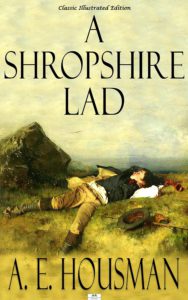An Introduction to A.E. Housman's "A Shropshire Lad": Youth, Mortality, and the Pastoral Disillusionment

Copyright © 2023 ELSL. All rights reserved
Duplication, distribution and/or adaption of any part of the work without the written permission of ELSL is a punishable offence under the Intellectual Property Act, No. 36 of 2003. (Sri Lanka)
In 1896, amidst the verdant landscapes of Victorian England, emerged a poetry collection that resonated with a melancholic dissonance. A.E. Housman’s “A Shropshire Lad,” though composed years earlier, offered a stark counterpoint to the prevailing optimism of the era. Its 63 poems, deceptively simple in form yet rife with emotional depth, delved into themes of youthful transience, the inevitability of death, and a disillusionment with the idyllic image of rural life.
Beyond the picturesque façade of Shropshire, Housman constructs a world where beauty coexists with sorrow and pastoral pleasures are overshadowed by the inevitability of loss. The titular “lad” becomes a recurring motif, embodying the fleeting nature of youth and the vulnerability of innocence. Poems like “Terence, This Is Stupid Stuff” and “Loveliest of Trees, the Cherry Now” capture the bittersweet joy of youth, while others, like “To An Athlete Dying Young” and “With Rue My Heart Is Laden,” confront mortality with a stark and unwavering gaze.
Housman’s mastery lies in his use of lyrical balladry. Employing simple diction and traditional rhyme schemes, he imbues his verses with a haunting musicality. Yet, beneath the surface simplicity lies a nuanced exploration of human emotions. Irony and stoicism dance with despair and longing, creating a complex tapestry of human experience.
The rural setting, though ostensibly the backdrop for the poems, becomes a powerful vehicle for thematic exploration. The idealised image of nature as a source of solace crumbles as it reveals its indifference to human suffering. Poems like “Reveille” and “Bredon Hill” expose the harsh realities of rural life, while others, like “On Wenlock Edge the Woods Are Wild” and “The Cherry Now,” find solace in the fleeting beauty of the natural world, even in the face of existential anxieties.
“A Shropshire Lad” transcended its time and place to become a universal expression of youthful angst and existential questioning. Its enduring popularity can be attributed to Housman’s ability to tap into the deepest human emotions—fear, sorrow, and the longing for meaning—using a simple yet evocative language. He offers no easy answers but instead guides us through the complexities of human experience with clarity and compassion.
